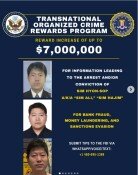A Digital World, Polarized Consumption, and Diverse Leisure Activities.
A Digital World, Polarized Consumption, and Diverse Leisure Activities.
Posted December. 14, 2004 22:04,
This year has witnessed extreme polarization in terms of both the recession-inflicted gap between social classes and personal consumptions. People have generously spent their money, affording what they desire such as digital gadgets, well-being related consumptions, and popular luxury brands, while reducing expenses on anything else, said PhD Kim Ik-tae of the brand-marketing institute of Cheil Communications Inc.
Korea, a Test Bed for IT Products
Cyworld an Internet community website, has been the biggest hit in the market this year. There are now even new sayings describing the trend, such as Koreans are divided into those who do Cy and those who dont.
The website provides each member with a personal homepage, where members put up their pictures and postings and share them with their cyber family that they form on-line. The number of Cyworld members is already over 11,000,000. The success of Cyworld makes people once again realize a simple truth that no highly advanced technology could succeed without acceptance by consumers sensitivities.
MP3 players, digital cameras and camera phones have been selling at a rate 70 to 150 percent more than last year, and are now becoming daily necessities of adolescents.
No Middle Class-
This years hit products lists recently announced by major department stores and outlet shopping malls such as Lotte, Shinsegae and Hyundai are clear evidence of such polarization.
So-ju and ramen, the sales barometers of the recession, have increased 30 percent. Coffee sales in outlet shopping malls have soared. Shorter skirts are back in the market, and are becoming a trend.
However, consumers do not seem too frugal to afford products that they desire. Though prices of organic agriculture products are 30 to 100 percent higher than those of non-organic products, the boom that already started years earlier is unlikely to shrink, even today. Thanks to the increased attention for pretty looking men in the first half of this year, mens clothing companies have been busy putting flower-printed shirts in the market. Expensive jeans pants costing more than \300,000 are also a trend. The sale of premium TVs too has soared, as the use of digital transmission systems was decided on.
Now, people are not hesitate to spend money on something only for themselves or what they think will reveal their own individualities. Such personalization of consumption or small extravagancy is widely shown, said researcher Kim Tae-moon of the LG Economic Research Institute.
An Increased Desire for Leisure and Cultural Life
As more and more companies adopted the five-day week work system, practical clothing that people can wear both in normal times and for outdoor activities such as climbing, has become very popular. Even a new concept, called caport, which combines sports and casual, has emerged. Business casual clothing has also become popular among office people, since they can wear them both on weekdays and weekends.
As the number of people who enjoy climbing, inline skating and mountain biking rises, the sales of various leisure products has increased as well.
The extended personal time has caused an increased number of moviegoers, since the movie is the cheapest cultural product. In the background of the success of Taegukgi and Silmido that both attracted more than 10,000,000 people, the increased desire for culture must have played an important part besides the improved quality of the films themselves.







